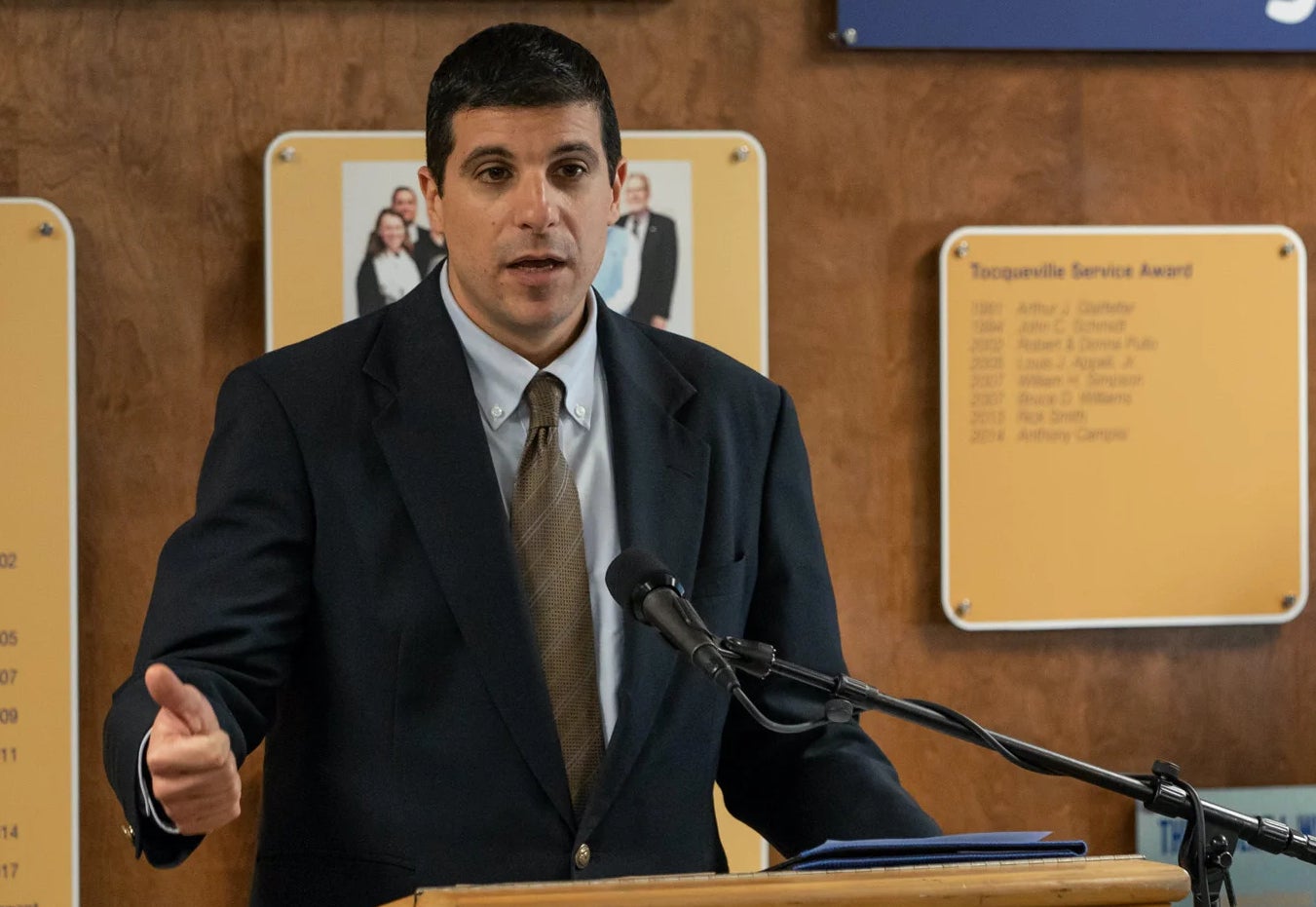Utah
Many cases, few prosecutions: KSL Investigators examine Utah’s ‘second look’ review of rape cases
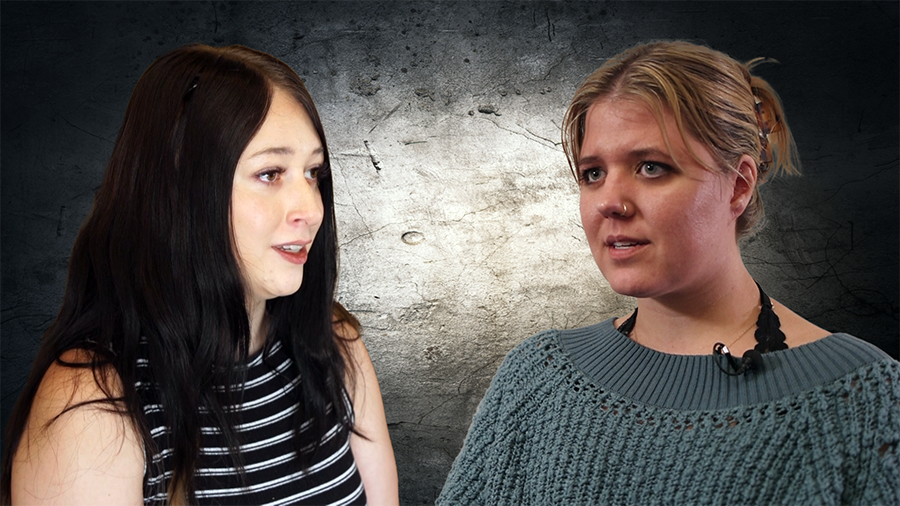
Editor’s note: This story is the first of two parts examining the impact of a unique initiative in Utah allowing fresh reviews of uncharged first-degree felony cases.
SALT LAKE CITY – It was Utah’s answer to an extraordinary request from four women who wanted new eyes on their allegations of sexual assault.
State lawmakers created a new layer in the criminal justice system – the first of its kind in the country – to review mothballed cases either passed up by prosecutors or collecting dust on their desks for more than six months.
The 2019 law allows survivors of the most severe crimes to bring their evidence to the office of the state’s top law enforcer for a fresh look. Utah lawmakers gave the Utah Attorney General’s Office power to investigate further and even bring charges based on what they find.
The law directs the office to take a second look only at first-degree felony cases, which include rape, murder, and assaulting a police officer. In the four years since the measure, HB281, took effect, every case has involved sexual assault, according to the office.
Four years later, Utah is still the only state with this process. So how well is it working?
Che Arguello, the prosecutor overseeing these cases in the Attorney General’s Office, declined to talk about specific cases. But he said the office is committed to conducting thorough reviews and treating victims with sensitivity throughout the course of an undeniably difficult process.
The KSL Investigators spoke with several women who took their cases to the Utah Attorney General’s Office.
A second shot at seeking justice
Almost three years ago, Box Elder County prosecutors told Rylee Ray, then 17, that they would not file criminal charges in the rape she’d reported to law enforcement.
“They told me that there wasn’t anything I could do, and I just couldn’t get my justice and I had to move on,” Ray recalled.
Rylee Ray submitted her rape case to the Utah Attorney General’s Office for a second look under HB 281. (Aubrey Shafer/KSL TV)
But she learned from her father, former Rep. Paul Ray, about an opportunity for a second shot at seeking justice – one he helped create. Rylee Ray told the KSL Investigators that the Attorney General’s Office treated her with sensitivity and respect.
But two other women told the KSL Investigators they had a different experience throughout the process, recalling their interactions with attorneys in the office as adversarial, unnecessarily traumatizing and at times inappropriate.
“I felt so betrayed through this whole thing,” said Tabitha Bell, who championed the 2019 law and asked the office to review her report of rape by a high school classmate.
Bell was one of four women who’d petitioned Utah’s Supreme Court to assign a special prosecutor to look over their separate cases after the Salt Lake County District Attorney’s Office declined to file criminal charges. The Legislature stepped in to create the new path before the court ruled.
KSL does not typically name victims of sexual assault. Rylee Ray and Bell chose to be identified in this report.
Many cases reviewed, few prosecuted
The Attorney General’s Office didn’t say exactly how many people have submitted cases for a second look despite multiple requests from the KSL Investigators.
Since 2019, Arguello said he and his colleagues have reviewed second look cases involving at least 66 accusers. They’ve closed or declined to file charges in as many as 35 cases, and several more are still under review. The office has filed charges against four men.
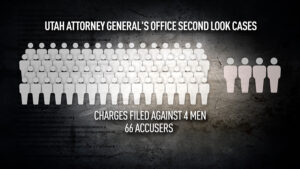
(KSL TV)
Arguello said the small number of charges is to be expected. By the time the reports reach him, he said they’ve often already received a careful look.
“I think the value in 281 should be measured, not in the number of cases that we file, but by the process itself, in the ability for victims to go through a different, additional process to have a different set of eyes, with significant experience, look at the case,” Arguello said.
It’s difficult for victims when the office can’t bring them justice, Arguello acknowledged.
“But the reality is, I’m not going to be able to make everybody happy,” he said. “And I have to focus on the law and the facts.”
A serial rapist convicted
When Rylee Ray was 17, Braydon Brailsford, a 19-year-old she’d met on social media, invited her over for dinner and a movie. She told him repeatedly she didn’t want to have sex, but he raped her and tried to strangle her in October 2020, court records state.
“I feared for my life that night,” Rylee Ray, now 20, recalled.
In a written statement provided to the KSL Investigators, Box Elder County Attorney Stephen Hadfield said Rylee Ray’s case was the first their office received against Brailsford.
“Unfortunately, due to some difficult evidentiary issues which could not be overcome, there was not a reasonable likelihood of proving the case against Mr. Brailsford beyond a reasonable doubt,” Hadfield wrote.
He said it was a difficult decision, and as his office later learned about additional cases naming Brailsford and evidence allowed prosecutors to move forward with charges, his office deferred to the Attorney General’s Office to avoid duplicative efforts.
“Fortunately, given the large number of different victims and the similarity of Mr. Brailsford’s criminal conduct against each of the victims, the Attorney General’s Office was able to overcome the evidentiary issues in the case which had been declined by the Box Elder County Attorney’s Office,” Hadfield wrote.
The Attorney General’s Office, in partnership with law enforcement, discovered several more victims and charged Brailsford in the sexual assaults of seven girls and women under the age of 20. Brailsford pleaded guilty to three counts of rape and one count of forcible sodomy in August 2022 and is now serving a sentence of 20 years to life in the Utah State Prison.
She described her interactions with the office as supportive and encouraging.
“The first thing that Che ever said to me was, ‘You can do this, and I believe in you,” she recalled.
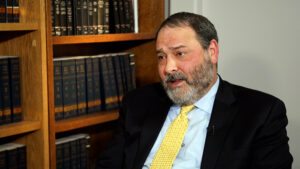
Che Arguello was hired by the Utah Attorney General’s Office in September 2020 to serve as the HB 281 prosecutor. (Josh Szymanik/KSL TV)
Arguello said the success in the case represents what can be done through the second look process. The case his office filed against Brailsford combined reported assaults in three different jurisdictions: Box Elder, Davis and Weber County.
“We were just able to take it and move forward with it in a different way with additional resources, and bring a successful prosecution that, I think, brought some justice,” he said.
‘They bungled this’
The office declined to prosecute Bell’s case, but she told the KSL Investigators it was the process, not the outcome, she found damaging.
Bell says questions that justice division director Craig Barlow asked her while investigating her case in 2019 were invasive and irrelevant.
“I remember Craig Barlow asking me, oh, like, ‘Have you had any other sexual partners? You can tell me even if you’re not going to tell your mom. I can keep a secret,’” Bell recalled.
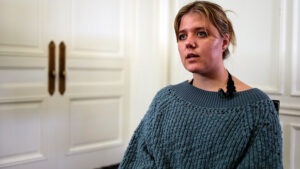
Tabitha Bell submitted her rape case to the Utah Attorney General’s Office for a second look under HB 281. (Jack Grimm/KSL TV)
That interview was not recorded. But Barlow and three other Attorney General’s employees who were in the room that day later drafted written statements about what happened. Most of these records were dated between four and six months after the meeting.
Bell says those statements misrepresent what happened. For example, Barlow’s statement indicates that Tabitha asked for her own victim advocate to leave the room, an assertion she says is false.
The attorney representing her in that meeting, Greg Ferbrache, agreed.
“Tabitha did not ask for the victim advocate to leave the room,” Ferbrache said. He’d arranged ahead of the interview for the advocate to be present as a support to his client, he added. Both Ferbrache and Bell said it was Barlow who directed the advocate to leave.
In a sworn statement obtained by the KSL Investigators through a public record request, the advocate wrote Barlow’s claim “is 100% false.” The advocate also wrote, “the group was unprepared and surprised by the demand especially after prior approval was granted. It was clear this was not the normal way victim-centered interviewing or investigations are done.”
With the advocate gone, Bell and Ferbrache say Barlow surprised them by reading a detailed and graphic account of the reported assault that was provided by the suspect. The suspect’s report claimed the incident was consensual.
Bell said the experience that day was more harmful to her mental health than the assault she originally reported to police.
“I would not recommend them touching one more survivor’s case,” Bell said.
She left the interview and took an Uber car to the airport to fly back to college in California, she recalled.
“In the Uber itself, I tried to throw myself out of the car. And then when I got to the airport, I literally collapsed on the ground,” Bell said.
Barlow did not respond to a request for comment from the KSL Investigators.
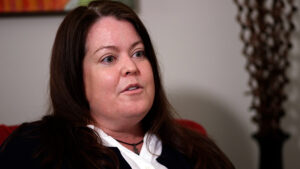
Attorney Jana Tibbitts represented a woman who submitted her rape case to the Utah Attorney General’s Office for a second look under HB 281. (Ken Fall/KSL TV)
Attorney Jana Tibbitts also requested a second look on behalf of a client who’d reported to police that she was raped in 2016.
The woman, who didn’t want to use her name in this report, feared retaliation from the suspect, Tibbitts said. Murray police were also concerned. In a letter to a judge in 2019, the city’s police chief warned that according to a risk assessment, the man ranked 9 on a scale of 1-10, and made “an endorsement of violence” when speaking with a detective.
“We have investigated familicide and homicide cases where assessments have not rated as high,” the chief wrote.
Out of concern for her client’s safety, Tibbitts asked to be alerted before investigators got in touch with the man to schedule an interview.
But in a phone call with Barlow that Tibbitts recorded and provided to KSL, Barlow is heard saying, “we may or may not talk with him. But we’re not going to give you that kind of information.”
Tibbitts says after listening to that call, her client didn’t feel safe moving forward with the review and withdrew her case.
“There’s consequences for not having a system that is hospitable or even remotely sensitive to victims,” Tibbitts said. “They bungled this.”
The suspect was later arrested in Idaho and charged with shooting two police officers.
Trauma-informed prosecutions
Patti Powers, a former prosecutor and a senior attorney advisor for the nonprofit AEquitas who now helps train and teach best practices for prosecuting sex assaults, said investigations should be centered around victims.
“We need to be respectful of their rights: the right to information, the right to notification,” Powers said. “Our work with victims is critical. That really is the heartbeat of any case that we want to advance to justice.”
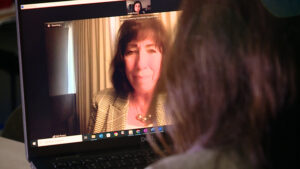
Patti Powers is a former prosecutor and a senior attorney advisor for the nonprofit Aequitas. (Jeff Dahdah/KSL TV)
Powers didn’t want to comment on specific cases but said in general, if someone wants to have a victim advocate present, investigators and prosecutors should accommodate that request.
While there may be a specific reason prosecutors would ask about a victim’s sex life, Powers said, “there usually is not a reason to ask victims about their sexual history.”
As lawmakers debated creating the process in 2019, one Utahn urged them not to assign the Attorney General’s Office to do the job. Terry Mitchell told a legislative panel that the office had investigated her report of sexual abuse against a federal judge a few years earlier. She says she was denied a victims advocate during the investigation and that the office mishandled the assignment in many other ways.
“During our first meeting, Craig Barlow, one of the Utah Attorney General executives, asked me if I enjoyed the abuse and if I had an orgasm,” Mitchell told the legislative committee.
The office has said in the past that there’s no question Mitchell was victimized by the judge and has insisted it followed standard practice for criminal investigations, saying it even filed a complaint with the federal court system.
Mitchell says the shortcomings of the second look process described by other women remind her of her own experience years ago, when she felt she was the one under investigation.
“I’m unsurprised, heartbroken for them, and frustrated. What does it take?” Mitchell said. To lawmakers, she added, “I would say, ‘I told you so. What are you going to do about it?’”
Republican Rep. Karianne Lisonbee, who sponsored HB 281, did not respond to an interview request from the KSL Investigators.
Powers said it’s key for law enforcers and attorneys to keep in mind that most survivors of these crimes live with lasting effects.
“For many victims of sexual violence, it’s a crime that never ends,” she said. “And so, we need to be very mindful of asking questions in a trauma-informed way, so that we’re not exacerbating the trauma that the victim has suffered.”
This report is part of a series examining how apparent gaps at every level of Utah’s criminal justice system fail to protect Utahns.
If you have experienced sexual violence, you can access help and resources by calling Utah’s 24-hour Sexual Violence Helpline at 1-888-421-1100. You can also call the National Sexual Assault Hotline at 1-800-656-4673 for free, confidential counseling.
Have you experienced something you think just isn’t right? The KSL Investigators want to help. Submit your tip at investigates@ksl.com or 385-707-6153 so we can get working for you.

Utah
Rangers give Utah ‘positive review’ after playing in state for first time

SALT LAKE CITY — Delta Center became the 91st unique venue in which the Rangers have played a regular-season game Thursday night when they beat Utah Hockey Club, 5-3, for the first time.
There’s always a sort of buzz to a team that’s competing in a new place, and the Blueshirts were no different.
The NHL era in Utah came quickly thanks to the diligence of owner Ryan Smith, who had been working on getting a team since 2022.
When arena and ownership issues hit a breaking point in Arizona back in April, Smith purchased the Coyotes assets from owner Alex Meruelo for $1.2 billion.
Now, Utah is the 25th state or district in which the Blueshirts have played.
In October, the Salt Lake City Council voted unanimously to approve and help fund Smith Entertainment Group’s renovation plans of Delta Center, which was constructed for the NBA Jazz and needs to be fixed for dual use with hockey now on the schedule, too.
The remodel, which is expected to unfold in three phases and address the 4,000-5,000 seats with obstructed views of the ice, is expected to be completed by the start of the 2027-28 NHL and NBA seasons.
“It felt pretty good,” Braden Schneider told The Post of his first touch of Delta Center ice. “I think it’s a cool rink. It’s a little different, it’s pretty steep. It looks nice. Everything that’s here with it is really nice. I think it’s a positive review from me.”
The commitment to making hockey work in Utah is evident in the city’s planned contribution of $900 million, as well as in SEG’s pledge to invest a minimum of $3 billion, according to the Sports Business Journal.
Hockey, however, already had a presence in Salt Lake City.
Before Utah H.C., which is supposed to announce a permanent name between the end of this season and the draft, there were the Utah Grizzlies (now of the ECHL) and the Salt Lake Golden Eagles (defunct).
Peter Laviolette played for the Denver Rangers in 1988-89, which was also the last time the Rangers head coach was in the city.
He got a good laugh remembering how there weren’t many IHL teams around either Denver or Salt Lake City back then.
“God, we must’ve played them 25 times,” he said with a smile after the Rangers held an optional practice at the Olympic Oval in nearby Kearns.
The Oval, which was built for indoor speed skating at the 2002 Winter Olympic Games, was packed on a Wednesday afternoon with youth hockey and curling practice on the opposite side of where the Rangers skated.
Players had to walk from the Rangers locker room underneath the main level, up a couple flights of stairs and into their designated rink, which was surrounded by a massive speed skating sheet that wrapped around the entire facility.
The arenas and city may be new to most of the Rangers but not for Laviolette or assistant Michael Peca.
Peca has fond memories after winning a gold medal with Team Canada in 2002.
“Practice at the practice arena [felt] good for me because I know the Olympic Games were there,” Artemi Panarin told The Post before the game Thursday. “For me, Olympic Games are something special, and I just enjoy that energy from the arena. Pretty fun.”
Igor Shesterkin stopped 28 of the 31 shots he faced in his 14th victory of the season.
Zac Jones was a healthy scratch for the 10th straight game and the 12th time in the last 13.
The Rangers scored a shorthanded goal for the second straight game, which gave the team seven on the season. That’s good for third in the NHL behind only the Panthers (11) and Lightning (8).
Utah
Should Utah's state employees return full time to the office? What Gov. Spencer Cox says about changing the work from home policy
Gov. Spencer Cox is about to overhaul Utah’s remote work policy for state employees.
But during his monthly PBS Utah news conference Thursday, the governor stopped short of saying whether he’s going to order state government workers to return to the office full time.
“We’re still working on that and we’ll have more to announce on that soon,” Cox said, adding that since the COVID-19 pandemic, the state has “been bringing more and more people back into the office. So we’ll continue to evaluate where it works and where it doesn’t.”
Approximately 40% of state government’s more than 22,400 employees are eligible to work from home but exactly how many do is not being tracked. Last year, many state workers were told they must be in the office at least two days a week.
“Remote work has its place. But so does being together,” the governor said. “That’s another thing that we learned during the pandemic. It’s not healthy to be isolated. We need that feedback, we need that interaction that comes not just from doing your work.”
He said it’s also important “to say ‘hi’ when you go to the water cooler or the restroom, and being able to get in a room together and just be able to talk and look at each other face-to-face. That matters. So those are the things that we’re working through right now.”
Cox, who once called himself “a televangelist for telework,” promised “there will be more to come.”
Before the pandemic, which had both private and public sector employees working from home, Utah had been encouraging what was known as telework for state employees as a way to save money on building or leasing office space.
Cox, who helmed the state’s pilot teleworking program in 2018 as lieutenant governor, said Thursday it “was very successful. It showed remote work can work if it’s done in the right ways. You don’t just send people home with a computer. It’s much more detailed than that.”
The pilot program showed what’s needed is “incredible oversight. You have to have different training. You have to have an area of your house that is set aside specifically for work so you have an actual workspace that had to be approved and compliant,” he said.
When those criteria are met, the governor said “we see actually an increase in productivity.”
But when the pandemic struck in 2020, “we didn’t have those same things in place for the thousands of workers who were working remotely,” he said. Now when it comes to the state’s telework program, the governor said, “parts of it are working. I think parts of it aren’t.”
The prospect of cutting government costs through shared workspaces and “getting rid of some of the leases that are very expensive” remains a priority, Cox said. State agencies are currently reviewing future space needs.
“What we’re trying to do is to figure out, how do we save taxpayer money by using less space and how do we make sure that the employees that are working on behalf of the taxpayers are efficient and productive,” he said, while “giving them as many opportunities as possible.”
Utah
Gordon Monson: The once-proud Delta Center is now haunted, plagued by the ghosts and ghouls of losing

The Utah Jazz have the worst home win percentage in the NBA, with just three wins.
The Utah Hockey Club has the worst home win percentage in the NHL, with just six wins.
Well, well. How the NBA’s mighty fortress in Utah has fallen. And, as it turns out now, the NHL’s, too, not that so far it ever really had much of a chance to stand firm.
The Delta Center used to be a favored place — a palace — for the Jazz to play and a dreaded place — a pit — for opposing NBA teams to try to survive, let alone get a win.
Visiting players hated playing there for a whole lot of reasons, foremost among them, they knew they had only a scant shot at victory. They knew it and the Jazz knew it, and the fans knew it. The cinder blocks in the walls and the steel girders in the roof, where the crowd noise of what sounded like a squadron of F-22 fighters taking off ricocheted from every hard surface in the arena, knew it.
Oh, what used to be.
A poll taken by Sports Illustrated among active players in 2008 ranked the Delta Center as “the most intimidating arena in the NBA.”
It had been that way since the early ‘90s, when Larry built the joint.
Maybe you remember, the place was a looney bin. It wasn’t just the building, although the basic structure was intended primarily for basketball, what with fans seated all snug to the floor, courtside and along the end lines, and the hovering seats ascending upward from there. Man, the fans were loud. More than loud, they were rowdy and raucous and … motivated. It was as though all Utahns had their identity wrapped up in every game’s result. If the Jazz won, people around here truly felt better about themselves, about who they were and what they were all about.
(Francisco Kjolseth | The Salt Lake Tribune) Bear smokes out a Calgary Flames fan during an NHL hockey game against the Utah Hockey Club at the Delta Center in Salt Lake City on Wednesday, Oct. 30, 2024.
The Jazz were them, and they were the Jazz. Many of those fans still show up — out of boredom, out of sympathy, out of self-loathing, but healthy self-esteem nowadays is in the shortest of supply.
This is now, that was then. The entire experience at the Delta Center has flipped.
What once had even ultra-competitive opponents like Michael Jordan and Kobe Bryant finding themselves swamped in the environment — although for them it often stirred their best talents — for more than a few lesser players, the Delta Center’s force of personality, for lack of a better way of describing it, crushed them.
Yeah, it helped that the Jazz often had stellar teams taking the floor, teams that were, as mentioned, fairly convinced they were going to win even before they left the locker room. I once asked Antoine Carr, as he sat in front of his locker in the minutes before the opening tip what the odds were that the Jazz would triumph that night. He responded with a question of his own: “Where we playing?”
“Right here,” I answered.
“Nuff said,” Big Dawg barked.
And, sure enough, the victorious hounds were released, same as it ever was.
Back in those years, many years, the Jazz finished with home records of 36-5, 33-8, 34-7, 37-4, 38-3. As recently as 2020-21, the Jazz were 31-5 at home. According to Statmuse, the Jazz’s all-time home record is 1,375-657, which, of course, includes some games played outside the Delta Center. But you get the idea.
It’s a place where you can bet on them winning.
Could.
Not anymore.
The Jazz thus far this season are 3-14 at home. The sounds of those jets launching have grown if not silent, a bit quieter. It’s not even the fans’ fault, though. They’re doing what they can, trying to give the Jazz a lift. The fact that the Jazz draw as well as they do given the circumstances is remarkable. The crowd’s energy, or at least its effectiveness, more often than not surpasses what the team offers.
When the midseason juncture approaches, and the Jazz have just a few home wins to show for it, all you can say is, “Tanks,” or “No tanks,” depending on where you stand on the issue of the Jazz not really trying to win, as a means to win much more in the seasons ahead with added draft talent.
The thing is, even without a tanking effort going on, the same home-stumbling phenomenon is happening to the Utah Hockey Club. It shares the Jazz’s dubious designation, just not quite as lousy, with a home mark of 6-10-4.
Game one at the Delta Center, between the Utah Jazz and the Chicago Bulls in the NBA finals in Salt Lake City
Salt Lake Tribune Staff Photo
You can almost see the tears rolling down out of the weeping windows of the Delta Center. The proud competitive chateau has turned into a sorry sagging shack, even as plans for more renovation are already underway.
Hockey gets a pass, considering it is new to the premises. And perhaps the Jazz do, too, since their bosses decided they were brilliant enough to disassemble a playoff team that they saw as not quite good enough — without enough financial flexibility in it — to then out-maneuver everybody else in the NBA to make an eventual move upward.
That doesn’t mean the building has to like it. I’m thinking the place is haunted now. That’s the feeling I get when I walk through the doors. The ghosts of past 50-plus-win seasons are floating hither and thither, making a racket, being chased around and off by sub-.500 spirits.
The specters and spooks of losing will do that. They’re doing it now. And the only exorcism that will save the Delta Center is …
Ownership and management being as smart as they think and thought they were, smart enough to be worthy of the place they call home.
(Trent Nelson | The Salt Lake Tribune) Utah Jazz guard Collin Sexton (2) at the end of the third quarter, behind by 24 (100-76), as the Utah Jazz host the Denver Nuggets, NBA basketball in Salt Lake City on Wednesday, Nov. 27, 2024.
-
/cdn.vox-cdn.com/uploads/chorus_asset/file/25822586/STK169_ZUCKERBERG_MAGA_STKS491_CVIRGINIA_A.jpg)
/cdn.vox-cdn.com/uploads/chorus_asset/file/25822586/STK169_ZUCKERBERG_MAGA_STKS491_CVIRGINIA_A.jpg) Technology1 week ago
Technology1 week agoMeta is highlighting a splintering global approach to online speech
-

 Science5 days ago
Science5 days agoMetro will offer free rides in L.A. through Sunday due to fires
-
/cdn.vox-cdn.com/uploads/chorus_asset/file/25821992/videoframe_720397.png)
/cdn.vox-cdn.com/uploads/chorus_asset/file/25821992/videoframe_720397.png) Technology1 week ago
Technology1 week agoLas Vegas police release ChatGPT logs from the suspect in the Cybertruck explosion
-

 News1 week ago
News1 week agoPhotos: Pacific Palisades Wildfire Engulfs Homes in an L.A. Neighborhood
-

 Education1 week ago
Education1 week agoFour Fraternity Members Charged After a Pledge Is Set on Fire
-

 Business1 week ago
Business1 week agoMeta Drops Rules Protecting LGBTQ Community as Part of Content Moderation Overhaul
-

 Politics1 week ago
Politics1 week agoTrump trolls Canada again, shares map with country as part of US: 'Oh Canada!'
-
/cdn.vox-cdn.com/uploads/chorus_asset/file/23935558/acastro_STK103__01.jpg)
/cdn.vox-cdn.com/uploads/chorus_asset/file/23935558/acastro_STK103__01.jpg) Technology5 days ago
Technology5 days agoAmazon Prime will shut down its clothing try-on program







